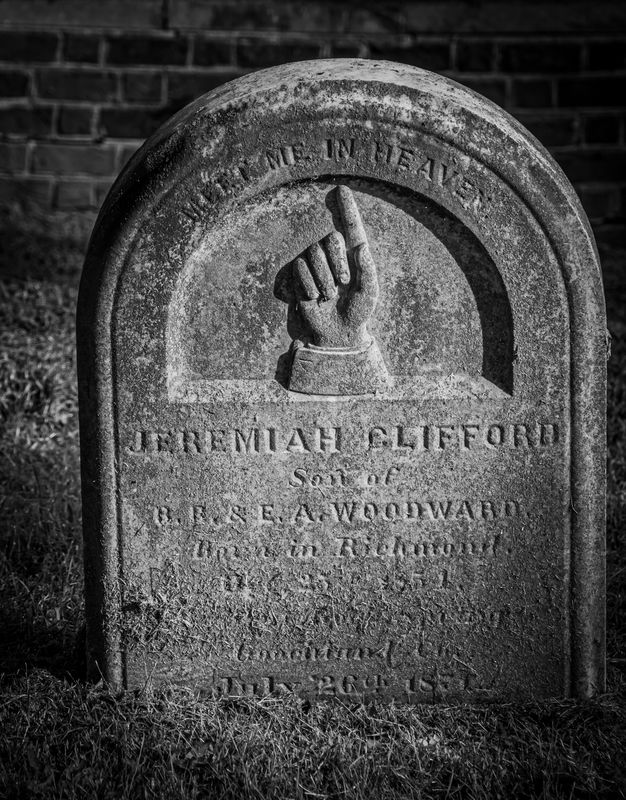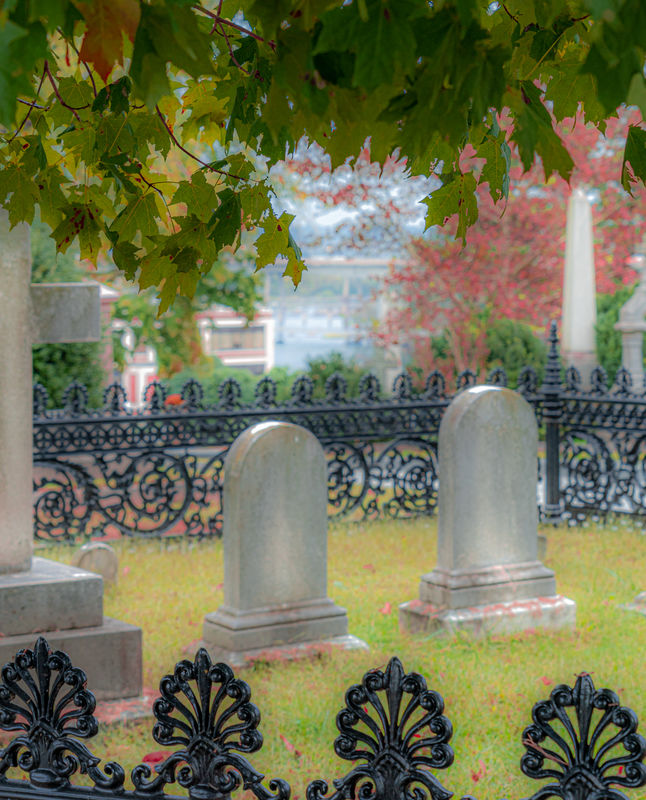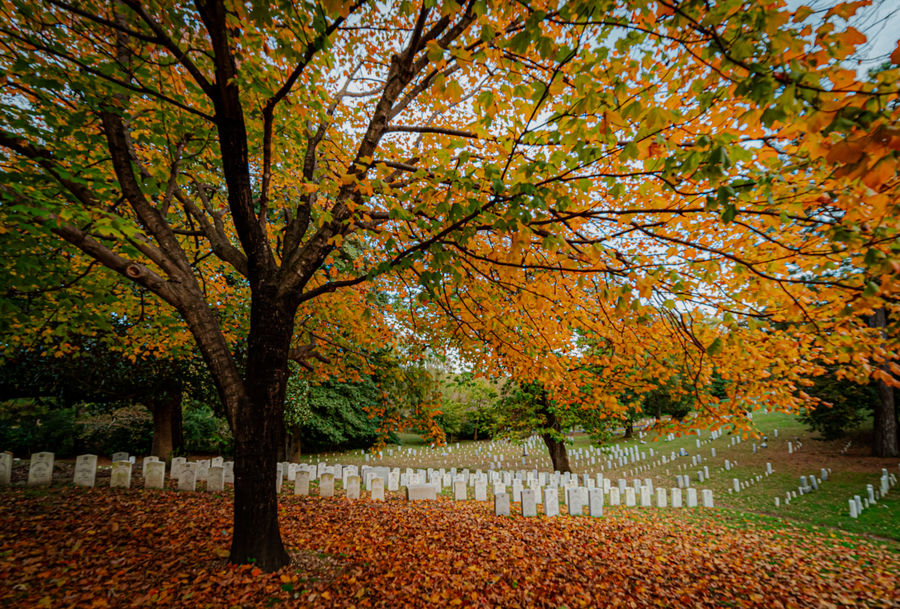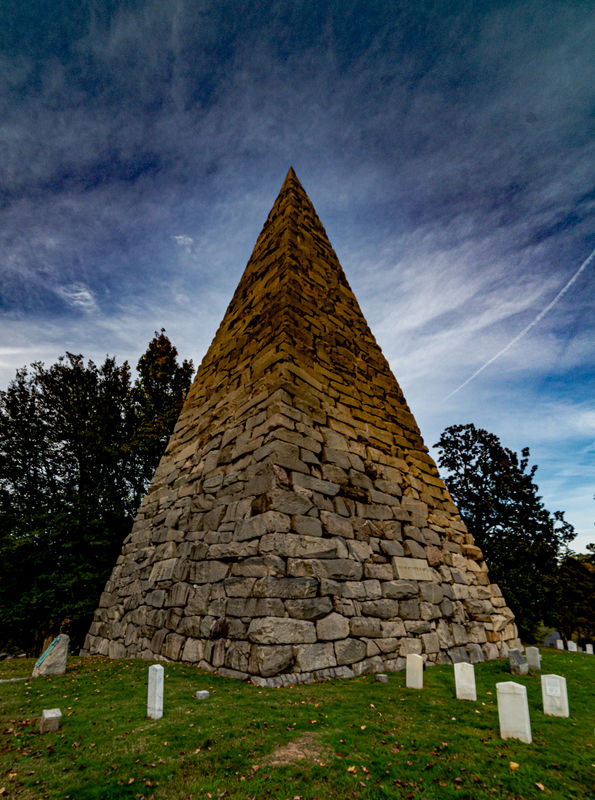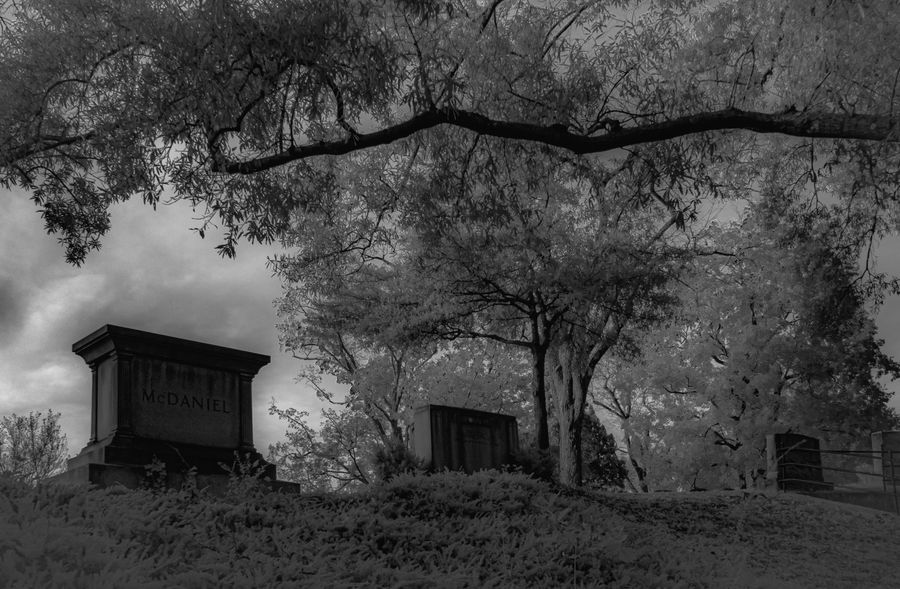Posts for: RVAshooter
Aug 22, 2022 23:02:52 #
Architect1776 wrote:
What is wrong? br br If your fantastic super dupe... (show quote)
There are two reasons that come to mind, based on my own failings. First, since many of us shoot only Raw images, we are bypassing much of the excellent, carefully engineered software in our cameras that would otherwise produce a fine SOOC image. With the right settings, the camera could do a great job, but we want to control that process with separate software such as Lightroom or Photoshop. Second, the more we use manual exposure without careful metering, the more likely we are to make mistakes that require postprocessing. Plus any other errors in focusing, camera stability, and underexposure sometimes create a Raw file that needs a lot of help to optimize exposure, sharpness and noise. If we don't bother to shoot Raw + jpeg (which I rarely do) we'll never know what we're missing. So thank you, Adobe, for the opportunity to exercise my creativity and tweak the setting for each shot. I'm glad I have the time to do the processing and take control of the image.
Jul 8, 2022 17:13:24 #
I've been using a D800e for years for macro work and landscapes. The detail is remarkable with a good lens. Enough that I've never felt the need for a D850. For sports and general use, I'm still using a D3X and D3S or Sony A9. For general use, the D800 is probably better than an 800e, where the lack of an AA filter has caused occasional moire interactions. You will like the D800, especially with your best lenses.
Jul 4, 2022 16:31:37 #
daninr8 wrote:
Is anyone still actively shooting with the Sony A7... (show quote)
I use that same Sigma 18-250 on a Sony A65 crop sensor body for casual non-paying situations where the light is good and I need both the reach and the wide angle option. For local events (not indoor sports) like festivals your current rig will work for you. And you can handle outdoor sports like baseball and football. Low-light situations like concerts, theatrical settings, weddings, etc are not what a superzoom was made for, unless you can use flash. Indoor sports facilities need a more light sensitive lens so you can also get the shutter speed to stop the action.
For more demanding/paying work, I use two Sony A77II crop sensor bodies and A-mount lenses like the Sony 70-400 Gll, Minolta 80-200/2.8 and the Sony Zeiss 24-70/2.8. The A77ll has less noise and better focusing than the original A77, and the higher grade lenses enable higher shutter speeds and deliver more detail under demanding conditions. Color and contrast are certainly better too. If I need higher ISO performance from the better lenses, I use the full-frame Sony A9 and A7slll bodies with the A to E mount adaptor (LA-EA4). Good pro glass is always an improvement over a mid-price 18-250 superzoom. Although that rig is easy to carry and you already own it.
If you could swing a used A77ll, it pairs well with the Sony 16-50/2.8 SSM (equivalent 24-75 with constant 2.8). As a second body for long shots, keep using your A77/18-250 combo and think about getting a Minolta 100-400 or the Sony 70-300 G 4.5-5.6 to replace the Sigma. This two-body all A-mount approach gives you greater flexibility and a backup, while using the same batteries (bigger than the A7 battery) in both bodies, all on a tight budget.
Apr 11, 2022 17:58:21 #
The economics of the trade is OK, especially if you have no use for the longer zoom lens. But if the purpose of the trade is a class reunion group shot, I would use something less extreme than the 14. I use the Rokinon 14/2.8 FX frequently at f8 for sweeping interior and exterior shots (and astro at f2.8), but there can be quite a bit of distortion around the outer 20% of the view. The center is sharp enough and the depth of field at f8 helps a lot, but your class group is going to look fine in the center and not so good as you move closer to fill more of the frame. For resolution and detail, a 50/1.8 Nikkor AF-D is a fine low-cost choice to render the group if you move the camera back and fill the frame. Excellent examples selling on Ebay for as little as $48 including shipping. And you still have the zoom. But if you're in a tight room with the group and can't get distance, the the distortion of the 14 might be fun, plus it looks much cooler with that huge front element.
Apr 1, 2022 20:15:09 #
Vault wrote:
Good evening fellow Hoggers; I have just received a Nikon 24-85 2.8-4 AF-D lens. I have taken about 50 shots on my D600 and D7100 and think it is a brilliant peice of glass. My eyes have never been the best but compared to other lenses I have this is very nice. The DX 35 1.8 and FX 50 1.8 D are faster and my go to lenes but for a mid zoom I love it. Any comments?
Yes, the older 24-85 2.8-4 AF-D is certainly sharper than the (similar era) first version of 24-120 and probably the second version of the 24-120 (red VR) as well. There's probably more distortion in the 24-85 than your two prime lenses, but it's great to have the flexibility of the zoom and the distortion is reduced in post processing. I have used all three of the older zooms and I always thought the 24-85 was better.
However, now I use the AF-S VR ED 24-85 3.5-4.5 and the newest AF-S VR 24-120/4 on a D3X and an 800e. The AF-S VR versions are much improved over the old lenses, with the AF-S 24-85 ED VR being a bit sharper than the AF-S ED VR 24-120 despite not having the coveted gold band.
Feb 16, 2022 18:10:59 #
For me PP has become the second half of the photographic process. Originally it was a way to fix flaws and rescue an unsatisfactory shot. But now I expect to do as much as I can to bring out what I want in a shot. So I shoot only RAW files and have a pretty good idea what can be done to finish the picture. There's some satisfaction in taking an active role in completing the process. And the real payoff for me is discovering that the image is turning out better than I expected and that my "creativity" is being rewarded.
But, with some cameras and some assignments I do suspect that processing from RAW can be a waste of time. After all, by processing RAW files for routine shots, I'm betting that I'm smarter than the camera and all the engineering that is built in. So when I get a new body, I shoot it with both RAW and jpegs and see if I can get the in camera settings to produce a jpeg I like. If you can get a satisfactory image straight out of the camera, that's very useful. And there's still the RAW file for the jobs that justify the processing time.
But, with some cameras and some assignments I do suspect that processing from RAW can be a waste of time. After all, by processing RAW files for routine shots, I'm betting that I'm smarter than the camera and all the engineering that is built in. So when I get a new body, I shoot it with both RAW and jpegs and see if I can get the in camera settings to produce a jpeg I like. If you can get a satisfactory image straight out of the camera, that's very useful. And there's still the RAW file for the jobs that justify the processing time.
Jan 17, 2022 12:13:27 #
There isn't much to add to the design. The Sony RX-10 iii and iv share the same sensor and mechanics as the RX-100 iv. Very few differences except the RX-10 uses a plastic body to integrate the Zeiss 24-600 lens in place of the RX-100's slightly faster 24-70 in a metal body. The RX-100 has been updated a bit through a 7th generation with a 24-200 lens. So these three models cover a lot of ground. You can pick your favorite. In the RX-10, the silent electronic shutter is fine, the exposure control is fine, image stabilization is effective, the lens is great. Sony has made this small-sensor camera work really well.
There is one special thing about the RX-10, the in-camera processing. I use both the RX-10 and 100 because of size and weight, shooting raw stills because I have the time and desire to postprocess according to preferences I've developed over the years with the usual Nikon, Canon, and Sony APS-C and full-frame cameras that I mainly use.
Shooting Raw files, I am wasting a lot of the RX-10's potential by ignoring the in-camera processing. If you like Sony's color rendition, it is very hard to beat the processing done in camera to maximize exposure, sharpness, and detail while controlling noise. Especially at higher ISOs. In addition to the exceptional optics, the other great strength of the RX-10 is the video performance, an area where in-camera processing is even more essential and probably the reason Sony made the RX-10's in-camera processing a priority. Not much to improve overall.
There is one special thing about the RX-10, the in-camera processing. I use both the RX-10 and 100 because of size and weight, shooting raw stills because I have the time and desire to postprocess according to preferences I've developed over the years with the usual Nikon, Canon, and Sony APS-C and full-frame cameras that I mainly use.
Shooting Raw files, I am wasting a lot of the RX-10's potential by ignoring the in-camera processing. If you like Sony's color rendition, it is very hard to beat the processing done in camera to maximize exposure, sharpness, and detail while controlling noise. Especially at higher ISOs. In addition to the exceptional optics, the other great strength of the RX-10 is the video performance, an area where in-camera processing is even more essential and probably the reason Sony made the RX-10's in-camera processing a priority. Not much to improve overall.
Jan 16, 2022 17:30:50 #
jcwall396 wrote:
I am an old photography dog and currently own a Ni... (show quote)
I use a Sony RX-10 iv when I want minimum weight while hiking but expect to need some telephoto reach. The results are very good compared to my usual full-frame cameras and their bulky lenses. The only issue I have with the RX-10 is with noise at 1600 ISO in deep shadows, and that can be fixed with Topaz Denoise. Also, I don't use back button focus as much as I do on other bodies because the button is not easy to locate quickly. The FZ-2500 has less reach (480 vs. 600mm) and is 1/3 stop less light sensitive. The sensor and ISO rating are identical on paper. I have used the FZ-1000 (predecessor to the 2500) and found the build quality to be lighter than the Sony, which also has some degree of weather sealing that has kept out dust. So the extra cost for the Sony is probably justified.
Jan 3, 2022 14:37:39 #
When shooting very close to the ground for a unique point of view, I opened the articulating rear display, carefully set the camera on the clean brick walkway, stood up to check the scene, and then turned back to the camera to adjust it, stepping on the display and crushing it and the hinge mechanism. The viewfinder on that body still works, but I've never used it again.
Nov 21, 2021 17:32:54 #
I've used the RX-100 since it came out and have two, a 1st gen and mk 3, as well as a Sony Rx-10 mk3 which I think has the same sensor. I also use full-frame Nikons and the Sony A9. The image quality in the Rx-100 is excellent in good light, but the relatively small sensor can be noisy over 800-1600 ISO and shadows are going to need extra noise reduction. The rear articulated screen is not very sturdy and the coating comes off the rear display easily with normal use. I try to keep mine in some sort of case. If you keep it in your pants pocket the front will get dented and then the lens cover will not withdraw properly. But even with these concerns, it's a great little camera. Plus you get the opportunity to take a shot because it's so easy to bring along.
Nov 14, 2021 18:23:24 #
I've always tried to find a way to use ultrawide lenses as a way of getting an interesting perspective on landscapes or architecture. The other clear use is for astrophotography. So I use a a Zeiss 16-35/4 OSS on my Sony A9, and a Sigma 10-20 on my Sony A6500. I still use the Samyang 14/2.8 on my Nikon D3X and 800e. Occasionally I'm tempted to use one of these for portraits or group shots, but I am very careful to center an individual subject to balance the visual distortion, and not to get too close if it's a group shot. For interiors, careful framing is always essential to find a centered view that looks right, and then the overall shot falls away as context. So a lower camera position often seems more natural. The extra light from the 2.8 stop is good theoretically, but the stabilization and smaller size of the f4 lenses is more realistic. In actual use (except for astrophotography), you would be stopped down for depth of field anyway. If I really need the 2.8 I go to my 24-70 for Nikon or Sony.
Nov 11, 2021 14:49:54 #
Here are a few recent images from the Hollywood Cemetery in Richmond, VA. It's a well known site for Confederate graves overlooking the James River, but the broader appeal comes from the hilly site and beautiful trees.
Nov 9, 2021 15:33:48 #
I use the Olympus sight on a Nikon D3x with a 150-600 Sigma. Once you have the finder calibrated for that lens at 600mm, it's most useful with a short chest brace and neckstrap to track faster birds like eagles or osprey as the come into your line of sight. The Olympus sight also works well at air shows on a gimbal mount with the same body and lens. However, I don't use the sight with my Sony A9 and 100-400 combination, mainly because that's easier to shoot handheld with IBIS and its lighter weight.
Jul 17, 2021 20:44:08 #
I use a gimbal on a tripod to shoot air shows and races, anything where I'm panning horizontally. I usually shoot from a chair, sitting with the tripod tucked in close. For high-angle acrobatics, just unclip and shoot handheld. For birds or animals at a distance, it increases stability while giving some vertical flexibility along with the panning. But in that case I'm standing. I use a large enough tripod so there is no crouching, and the camera comes off the mount for hand held shots up close. I'm usually using a 150-600 lens, full-frame or crop-sensor body depending on the distance required.

